Your car has hundreds of parts and components and several systems that work together to keep your vehicle running. However, most car drivers only know very little about them. Even though most of us take driver's ed, still few people really examine the car parts which keep it working.
In fact, lots of drivers don’t really inspect what’s under their vehicle’s hood, not unless something’s damaged or broken. It is a common knowledge that air goes in the tires and fuel goes in the gas tank; however, there's so much more we need to know.
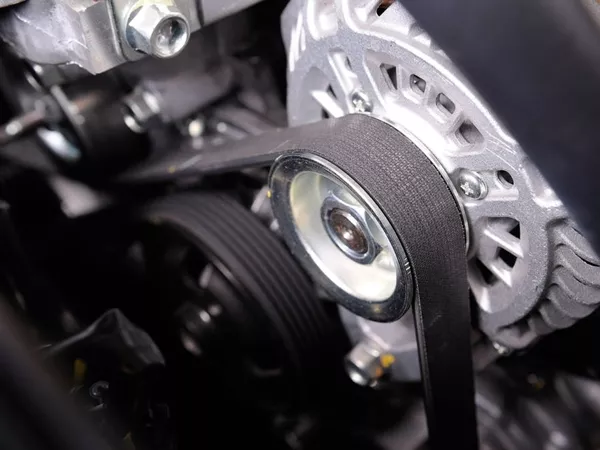
These belts are responsible for keeping the car running
Most drivers tend to wait for something to go wrong as a sign of engine problems. Smart drivers, on the other hand, know that regular maintenance has a significant impact on improving the life expectancy of their vehicle for more years.
One example is the belt of your vehicle. These belts are responsible for keeping the car running. If you don't have any idea about car belts, read on this article from Philkotse.com and find out the essential things you need to know when maintaining them.
1. The purpose of car belts
Car belts play a crucial role in keeping your vehicle running. It is also considered to be one of the most vital moving components of the car’s engine. These belts are responsible for driving the water pump, alternator, and the power steering pump.
If one of these parts stops functioning, the vehicle could face extreme and expensive problems. It could be loss of engine coolant to engine seize up. But luckily, hoses and belts are very easy to inspect if you know what you are looking for.
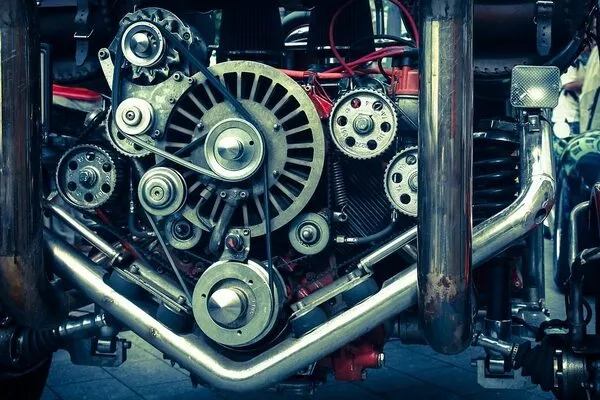
Car belts play a crucial role in keeping your vehicle running
2. Getting to know the different belts of your car
Here are the different car belts that you need to be familiar with:
V-belt belt
The name of this belt comes from its tapered V-shape. It is common on older vehicles. Engines utilizing this belt have several, and each V-belt drives a particular accessory.
Serpentine belt
Majority of modern vehicles utilize one serpentine belt for the engine accessories that can give extra wear and tear on the parts. To identify this belt, it is flat on one side that comes with several little V-shaped grooves on the opposite side. Serpentine belts wrap around several pulleys. As a matter of fact, the belt’s twisting is where its name was derived.
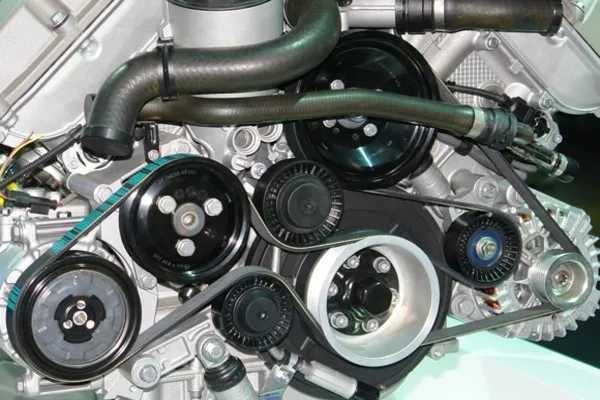
Majority of modern vehicles utilize one serpentine belt for the engine accessories
Timing belt
This belt is pretty unique compared to the serpentine belt and V-belt. The timing belt is responsible for connecting the crankshaft of the engine with its camshafts. It aids in synchronizing their timing, which is why it is called the timing belt.
You can quickly identify this belt. It is thin and wide, but it differs from other car belts because its underside has small teeth or ridges which prevents it from sliding out of the cogged pulleys. Lots of engines have enclosed timing belt. It means you will not be able to quickly locate or see it by just opening the car’s hood.
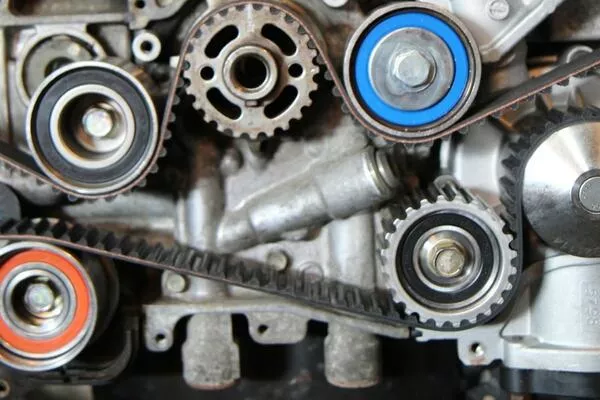
Timing belt aids in synchronizing their timing, which is why it is called the timing belt
More often, the timing belt is utilized for a variety of reasons. It can also drive the balance shafts or the oil pump. Other cars don’t utilize timing belts at all; instead, they opt for a timing chain or timing gears.
These three belts have a thing in common: they can break and wear down. But, unlike the Serpentine and V-belts, a damaged timing belt can lead to significant and expensive engine damage.
This is why your vehicle must undergo regular maintenance. This way, your mechanic will be able to check if your car's timing belt required replacement. If this is the case, then you should do what is recommended.
>>> Related:
- Serpentine vs Timing Belt: What are the functions and differences?
- Drive belt vs timing belt: What are the differences?
3. Basic belt maintenance
Tip 1. You should inspect your car’s belt at least once a month. This way, you will be able to see any signs of tension and wear. Don't forget to also check the belt's underside if there is the presence of erosion or cracks.
Important note: When checking the engine of your vehicle, make sure it has cooled down, and the car is switched off. It is for your safety because if you check the engine after you drive the car, chances are you will burn yourself.
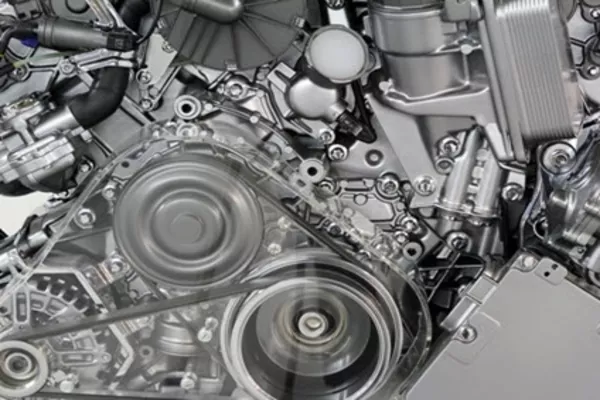
You should inspect your car’s belt at least once a month
Tip 2. Check the belt's inside and inspect if there's shininess or slickness. It is referred to as glazing. It happens if the belts are too loose. If this is the case, the belts will cause the pulley to slip because it can't grip.
Tip 3. You should also look for any signs of pilling. If there’s not enough tension in the belts, it will cause the outer layer of the rubber to wear away which will eventually build up on the drive pulleys. If this is the case, it means there's some misalignment which requires to be corrected.

You should also look for any signs of pilling
Tip 4. If you are a new driver or is still taking driving lessons, it will be better if you contact your mechanic if you perceived any problems in your vehicle. It is crucial that you maintain the belts of your vehicle regularly (which means monthly).
It will be a great help in extending the overall life of your four-wheels and will also save you from expensive repairs. Most importantly, it will keep you and your passengers safe whenever you use your car.
4. Warning signs
To keep the car belts functioning and in good condition, you have to first, spot any issue before it gets worse. Here are some of the symptoms of belt problems you need to watch out for:
- A squealing sound every time you start the car
- A squealing sound every time you turn the wheel in any direction (most common when parking)
- You will hear constant slow slapping sound every time the vehicle is idling.
- There's any grinding or whirring when the vehicle's engine is running.
- Illuminating 'Check Battery' light
- Weak or slick spots in the belt
- Cracks, frays, and grooves in the belt
- Vapor or steam coming from the underhood
- Engine overheating signs.
Recent posts
- Car maintenance: How to check the engine's good coolant level Nov 30, 2022
- Drive belts - What you have not known and what you need to follow Aug 17, 2022
- Engine protection: 5 engine parts you need keep close eyes on Nov 30, 2022
- Replacing the accessory drive belt Aug 16, 2022
- How does a timing belt in your car engine work? Feb 19, 2021












